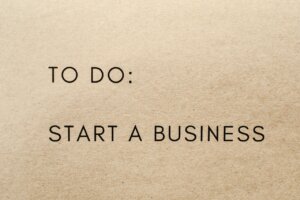Nike makes shoes, right? Well, not exactly. Nike is a wonderful company with superb marketing capability. But Nike outsources the actual manufacturing process to someone else. So in that sense, Nike does not make shoes. Nike’s competitive work is the design and marketing of athletic shoes. Obviously, the company has succeeded for years at doing just that. Knowing when to outsource work and when to keep it in-house is a key to successful strategy.
The underlying principle of business strategy is that you cannot excel at everything since resources are always finite and limited. Instead, you must make strategic choices. Key among these choices is a critical decision: which elements of work must be done by the company itself, and which elements should be outsourced? To make a sound decision of this sort, begin by identifying the work of the organization that is “mission critical.” Mission critical work cannot be trusted in the hands of another organization.
As a start toward culling the mission critical work from work that can be outsourced to others, it is helpful to perform and assessment of all the work processes performed by your company and sort each into one of three categories. Once work is categorized, the organization can be aligned to properly support the requirements of each type of work. These three categories are:
Competitive or Strategic Work. This is mission critical work. It is the core competence of the organization. Strategic work is that which creates sustainable competitive advantage and distinctiveness. For example, Nike differentiates itself through its strategic marketing work (sending non-core work such as manufacturing overseas), while Apple excels at product design. Competitive Work is always performed and managed in-house.
Competitive Enabling Work. This work “leverages” the competitive work, or enables the competitive work. Companies that stake their reputation on the excellence of their personnel will often consider employee development and education to be Competitive Enabling work. As another example, while Wal-Mart’s strategic differential and competitive work is considered operational excellence — managing information and keeping stock ever present on its shelves – the company’s competitive enabling work is both the development and maintenance of their state of the art information technology (IT).
If Competitive Enabling work is done better, the Competitive Work becomes more distinct in the eyes of stakeholders.
Business Essential Work. This work must be done to stay in business, but is work that customers don’t really value. Even if done at a world-class level, business essential work does not create sustainable competitive advantage. Nonetheless, if done below industry standards, the outputs of business essential work can cause disadvantage and/or poor performance. Business Essential work includes “compliance” work which is performed to comply with governmental regulations or to mitigate legal risk to the organization. Designers of high performance organizations should heed this important guiding principle: Business Essential work, if left unabated, will consume the organization’s competitive work. That is, people can get so consumed by the busy work of the company that they put off and lose focus on the organization’s truly strategic endeavors.
It’s critical for leaders to understand that by categorizing work as Business Essential, it doesn’t mean that this work is not important to the organization. On the contrary, it is essential to the organization to stay in business. In fact, if Business Essential work is done below the industry standard, it can lead to disadvantage. At the same time, if leaders invest a lot to get this work above a level at parity with competitors, it will never lead to distinctiveness in the eyes of the customers.
Outsourcing selected business processes has become an important strategic option for companies wanting to maintain a focus on their strategically important or competitive work. Resourcing decisions should be dictated by the type of work and the nature of the individual skills and knowledge required to perform the work.
Work that is not categorized as competitive work is subject to consideration for outsourcing of one sort or another. To determine the best possible distribution of work, we use the following model
———————————————————————————
Mark Rhodes is a highly experienced organizational strategy and design consultant with Strategy By Design. You can reach him via email at markrho@mindspring.com..
 Sections of this topic
Sections of this topic














